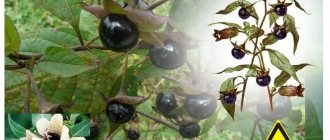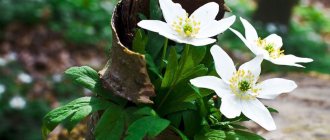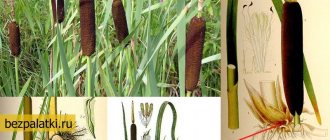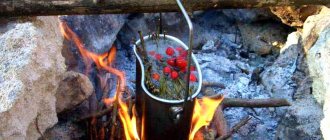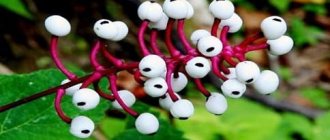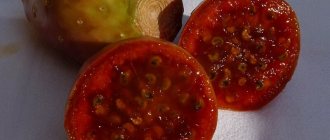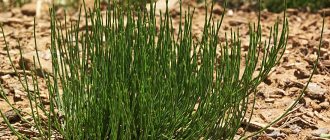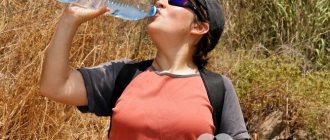sedobnye rasteniya
Experienced hikers know edible plants by heart; it will not be difficult for them to distinguish useful shoots from poisonous fruits. What cannot be said about those tourists who go to the forest for the first time. In order to protect yourself in the wild or simply supplement dishes fried over a fire with aromatic herbs, it is recommended that you familiarize yourself with the list of plants that can be eaten without a threat to health.
Where do edible plants and herbs grow?
It may seem strange to some, but wild plants can actually be eaten and, moreover, supply the human body with the necessary beneficial components. They allow the traveler, if necessary, not only to satisfy his hunger, but also to restore his energy supply.
Depending on the species, leaves, stems, shoots and even roots can be edible.
Each plant has an individual character, and therefore there is no one exact location for their growth. Some species live exclusively in the thick of forests, while others live in empty spaces. A very large number prefer to grow near bodies of water, for example, along rivers. And you can least meet them in the mountains.
Edible roots and root vegetables
Roots and root vegetables have been consumed by humans since very ancient times. If you think about it, even now the most common of them are found in everyday cuisine, for example, potatoes or carrots. Many varieties are little known to the uninitiated. But among them there are also those who were once simply undeservedly forgotten.
By the way, many of the root vegetables contain a large amount of useful microelements. But during cooking, most of them are lost, since the product is one way or another subjected to heat treatment. Of course, eating them raw to get your daily dose of vitamins is not the best way out. Although our ancestors once did just that.
List of root vegetables
The list of known roots and root vegetables suitable for food is not very long.
Potato.
Once brought to us from Europe by Peter I, it did not immediately gain recognition among the inhabitants of our country. Moreover, it came to riots when the emperor tried to force the peasants to grow it. Only in 1812 did they finally begin to eat it, and since then people have called it “second bread.”
Sweet potato.
For some reason, it is considered an analogue of potatoes, only with a sweeter taste. But this is a completely erroneous opinion. Outwardly, it is somewhat reminiscent of it, only the shape is slightly more elongated than that of a potato. And the main difference is that sweet potato is still a root, not a root vegetable.
Jerusalem artichoke.
Its other name is earthen pear. It contains a lot of nutrients, but is rarely consumed in its pure form: usually in the form of food additives or as part of some product. Jerusalem artichoke has a positive effect on the gastrointestinal tract, vascular system, and also has a beneficial effect on the condition of the skin. Moreover, to achieve the latter, it can be used both internally and to make cosmetic masks from it.
Parsnip.
This refers to its wild variety. Externally, parsnip root resembles a carrot, only white. It has a higher content of useful substances than Jerusalem artichoke. It can be eaten for diseases of the kidneys and cardiovascular system. Parsnip root has also found wide application in cosmetology.
American groundnut.
No matter how outlandish the name of this root vegetable may sound, we hasten to reassure you: we are talking about ordinary peanuts. By the way, it is also very rich in microelements necessary for the body. Prefers southern climate. therefore, it most often grows in the Caucasus (if we talk about Russia) and in other countries located at similar latitudes.
We recommend reading:
DrimSim - tourist SIM card for travelers
Ginger.
Better known as a spice. It became widely known as an addition to Japanese rolls and sushi. It is added as a seasoning to many dishes. It has beneficial properties, for example, promoting weight loss, and also helps with problems with blood pressure and musculoskeletal tissue.
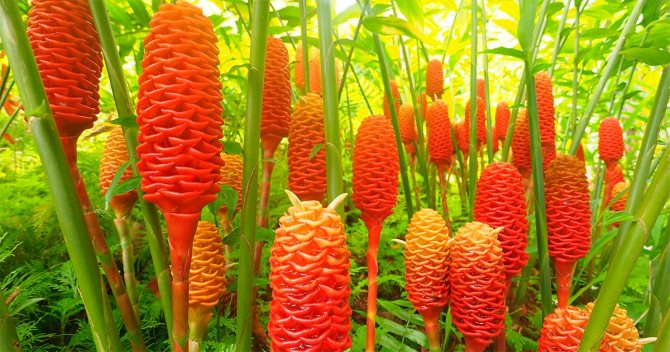
Dandelion
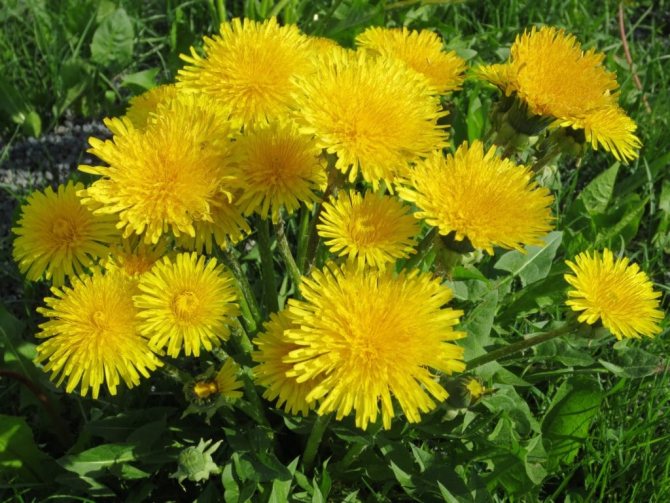
Even small children can easily recognize the good old dandelion. This perennial herbaceous plant belongs to the multiflora family. It is characterized by a green stem, up to 60 cm long, pinnately toothed leaves emerging from a basal rosette and yellow baskets. The fruit is an achene with a tuft of light gray hairs.
Grows mainly in the forest-steppe zone. You can meet it in open spaces, such as fields, along rivers, ditches, and in almost every yard and vegetable garden, as well as in the forest on the edges and along forest paths.
The flower has a valuable composition, which includes protein, vitamins A, C, E. All its parts contain milky juice, due to which it has a bitter taste. You can eat it raw, but not everyone will like the bitterness present. To get rid of it, it is better to boil the plant, but if this is not possible, at least pour a portion of boiling water over it or keep it in salt water for several hours. The leaves fit well into a salad, and the root is best eaten boiled or fried. It will serve as a quite satisfying dish. And if you dry it and finely chop it, you can get a healthy herbal tea.
Forest plants photo
Photographs, pictures of medicinal forest plants or plants growing in forests could always provide much more information about a plant than its detailed written description. Not every person will be able to correctly form a picture from the proposed description, at the same time, photographs and pictures of forest plants can give a comprehensive idea of the appearance and certain characteristics of the plant.
This page contains all photographs, pictures and photos of medicinal forest plants and names
listed in our Encyclopedia of Medicinal Plants. By clicking on any plant (listed below) that interests you, you will find: photographs of forest plants in nature, photographs of flowers of forest plants, photographs of leaves of forest plants and other parts of plants.
- Photos of forest plants on A
- Avran officinalis
photo
Photo of white hemlock stork- Althaea officinalis
photo - Common anise
photo
- Photos of forest plants on B
- Small periwinkle
photo - Colchicum magnificent
photo - White birch
photo - Silver birch
photo
- Photos of forest plants on B
- Valerian officinalis
photo - Three-leaf watch
photo - Common wolfberry
photo - Wolf bast
photo
- Photos of forest plants on G
- Galanthus
photo - Carnation grass
photo - Forest geranium
photo - Gentian cross-leaved
photo - Adonis cuckoo
photo
- Photos of forest plants on D
- Elecampane tall
photo - Common oak
photo - Oregano
photo
- Photos of forest plants on E
- Norway spruce
photo - Norway spruce
photo
- Photos of forest plants on F
- Jasmine
photo - Zhoster laxative
photo
- Photos of forest plants in the Z
- Hare cabbage photo
- Chickweed photo
- Wild strawberry photo
- Fragrant bison photo
- Photos of forest plants on K
- Common viburnum photo
- Swamp marigold photo
- Lake reed photo
- Siberian cedar photo
- Common sorrel photo
- Campanula rotundifolia photo
- Catnip photo
- Stinging nettle photo
- Cuckoo color photo
- European swimsuit photo
- Photos of forest plants on L
- May lily of the valley photo
- Potentilla gossamer photo
- Small-leaved linden photo
- Heart-shaped linden photo
- Lyubka bifolia photo
- Photos of forest plants on M
- Maral root photo
- Maryin root photo
- Common raspberry photo
- Common juniper photo
- Common woodlouse photo
- Photos of forest plants on N
- Marigolds photo
- Night violet photo
- Photos of forest plants on O
- Sea buckthorn photo
- Dandelion officinalis photo
- Gray alder photo
- Photos of forest plants on P
- Noble liverwort photo
- Moss club-shaped photo
- Large plantain photo
- Plantain lanceolata photo
- Snowdrop photo
- Primrose photo
- Opened lumbago photo
- Photos of forest plants in C
- Forest pine photo
- Scots pine photo
- Sophora thick-fruited photo
- Photos of forest plants on F
- Fragrant violet photo
- Photos of forest plants on X
- Horsetail photo
- Horsetail photo
- Common hop photo
- Photos of forest plants on C
- Common chicory photo
- Photos of forest plants on H
- Bird cherry photo
- Photos of forest plants on Sh
- Clary sage photo
- Rosehip cinnamon photo
- Photos of forest plants on Shch
- Horse sorrel photo
Additional photographs of medicinal plants
Medicinal plants home
Encyclopedia of medicinal plants Photos of medicinal plants Photos of Red Book plants and their names Photos of indoor plants and their names Photos of house plants and their names Photos of meadow plants and their names Photos of plants from ponds and their names Photos of forest plants and their names Photos of swamp plants and their names Photos of lake and river plants and their names Photos of mountain plants and their names Photos of steppe plants and their names Photos of poisonous plants and their names
| Share this article with your friends! |
Nettle
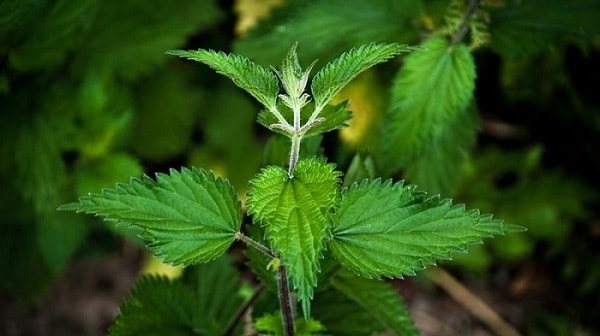
Nettle scares away hikers with its strong pungency. But, despite this peculiar property, it is not prohibited to eat it.
The plant is characterized by stems up to half a meter high and lanceolate leaves with sharp teeth along the perimeter. It is completely covered with hairs, giving it that same burning property. Most often, nettles can be found along ravines, in clearings and in forests, mainly in dark places, for example, next to bushes.
Nettle is very nutritious, it contains vitamins C, B, K, carotene and acids. If there is a need to eat raw leaves, you must first scald them with boiling water and then cut them into pieces or roll them. It is best if you can cook them for 5-6 minutes. This will allow all the formic acid to evaporate, giving the plant a neutral taste. At home, the leaves are added to cabbage soup, the stems are fermented, and the juice is taken as a tincture.
Wild onion
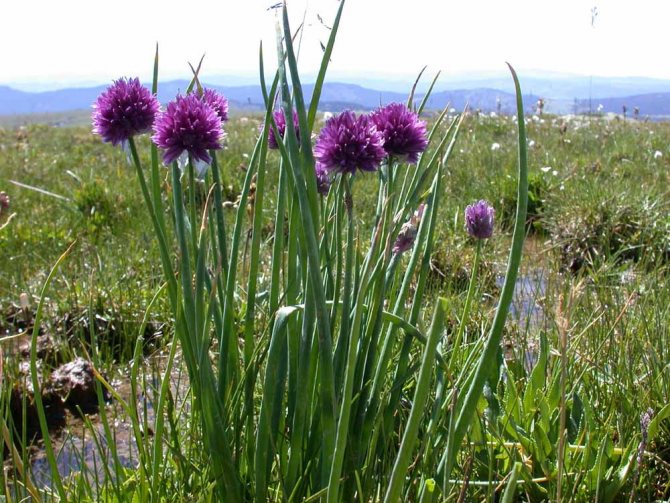
Many edible plants are eaten very rarely, but wild onions are not. It is very common in cooking, and some people use it along with regular green onions. If you come across it on the way, then you can eat it with peace of mind.
The perennial grass often grows in pastures, fields and forests. It can be distinguished by its long bare stem, arrow-shaped leaves and a spherical basket of white and lilac flowers.
All green parts of the plant can be eaten fresh or dried. To use it raw, no additional processing is required; just rinse it thoroughly. Onions are dried in the open air or in an oven, then chopped and used as a seasoning.
Manifold
The flora of the Earth is not only rich, but also diverse. That is, plants are very different from each other. At the same time, they can be combined according to certain characteristics. Based on their appearance, they are grouped into families. This means that they have common ancestors that appeared a very, very long time ago.
For example, there is a family of cereals , or bluegrass, which includes well-known plants used on the farm:
- Wheat,
- Oats,
- Rye,
- Rice,
- Corn,
- Barley,
- Millet.
Of all the cereal crops, the main one is wheat, which began to be grown back when people lived in caves.
Plants are also divided into species and genera. You can read about how this division occurs in special books - reference books. This is necessary in order to know whether the plant can be used as food or to make medicine from it.
A large number of plants do not produce seeds, flowers or fruits. Many are not green, and some have no chlorophyll at all, such as mushrooms. Representatives of the flora also differ in size. Some are small in size and can only be seen with a microscope. Others, reaching maturity, become giants.
This is interesting: how many eyes a bee has, the structure of the visual organs of bees.
woodlouse

Woodlice is known to many as a weed, so I don’t know everything about the edibility of this herb. This valuable plant has a branched, creeping stem, along which there are multiple oblong leaves. The flowers are white and star shaped.
The leaves can be consumed raw or cooked. They contain many useful components: vitamins A, C, E, iodine, potassium. The taste of the plant is absolutely neutral, so you can eat it either on its own or as part of dishes and salads.
Quinoa
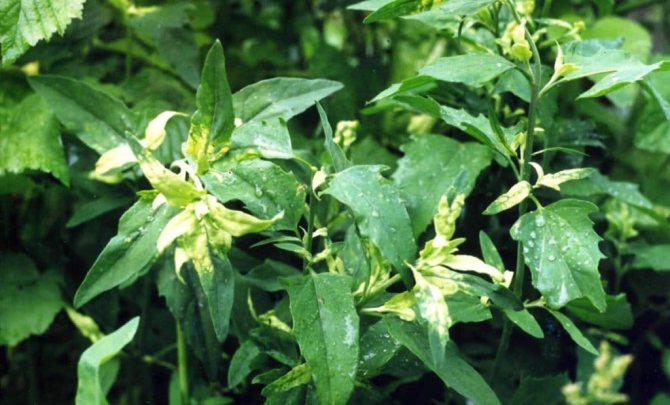
Many summer residents encounter this grass every year. It may have a green or reddish tint. Its leaves are lanceolate or spear-shaped. Depending on the species, it can reach a height of 50 to 150 cm.
You can eat it fresh, or you can boil it in a small amount of water. It is often used to prepare medicinal decoctions, as it contains a large amount of protein, fiber and organic acids.
Classification by life forms
All types of wild plants can be divided into several groups , representatives of which differ greatly in size, life expectancy and method of reproduction:
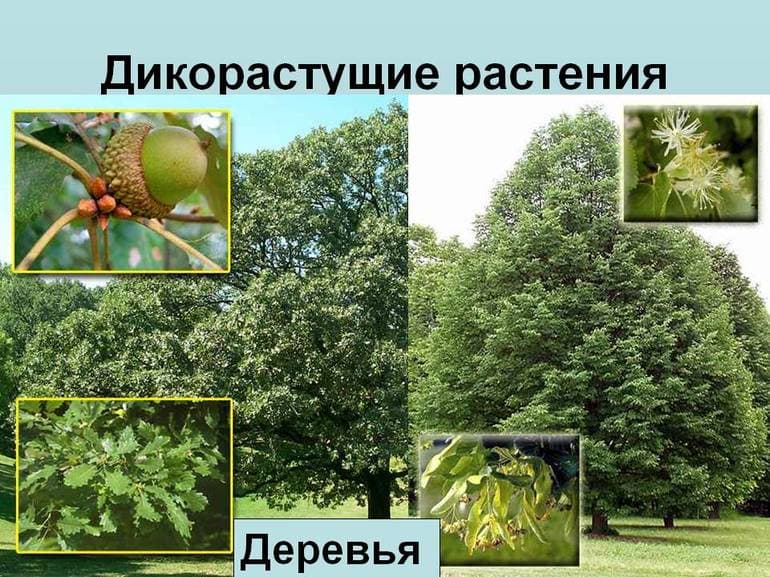
- Trees are long-lived plants consisting of a root system, trunk and crown. They are divided into coniferous and deciduous; under unfavorable conditions they can acquire a low-growing bush form.
- Shrubs characterized by several woody stems without a distinct trunk. They originate at the very surface, from the dormant buds of the main shoot. Height varies from 0.8 to 6 meters depending on the species and conditions.
- Subshrubs are perennial plants in which only the lower parts of the branches become woody; the upper parts usually die off.
- Shrubs that have most of the properties of the previous group, but are smaller in height (up to 0.5 meters).
- Lianas are climbing plants with weak, thin shoots, twining around a vertical support or attached to it with tendrils and additional roots.
- Succulents with fleshy, succulent leaves with a constant supply of water. Found in the flora of the middle zone: juveniles, sedums.
- Herbs are plants with soft green stems. They are divided into annual and perennial. Representatives of the first species grow from a seed in one season and die after fruiting. Perennials live for two years: in the first year, a shoot with a rosette of leaves and a horse is formed from the seed, and in the second, a flowering shoot appears. Some herbs (poppies, violets, barley) can be either annual or perennial.
Most natural species are perfectly adapted to the conditions and area of their existence and quickly get used to temperature changes and aggressive external influences.
Burdock
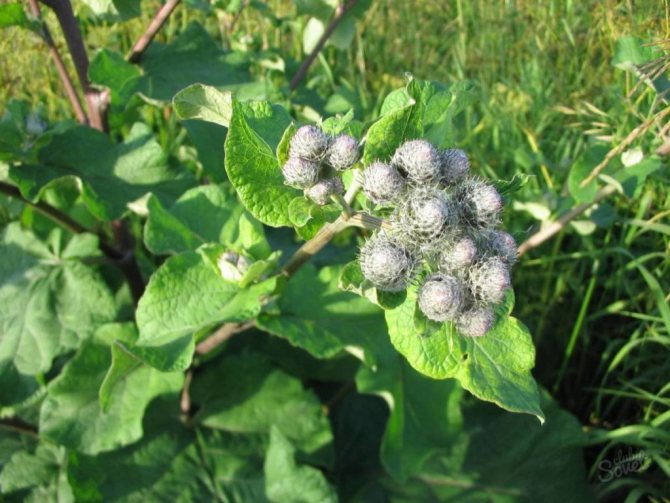
This plant is most often found in ditches, river openings, forest forests and hollows. It is very easy to distinguish: the trunk is thick and long, sometimes exceeding 1.5 m, large leaves are heart-shaped, purple inflorescences are covered with prickly needles.
Fresh leaves are often boiled in soups. But the edible root of the plant receives special attention. It can be eaten raw, or it can be heat treated, for example, baked in a fire. In structure it is very similar to regular potatoes.
Horse sorrel (wild sorrel)
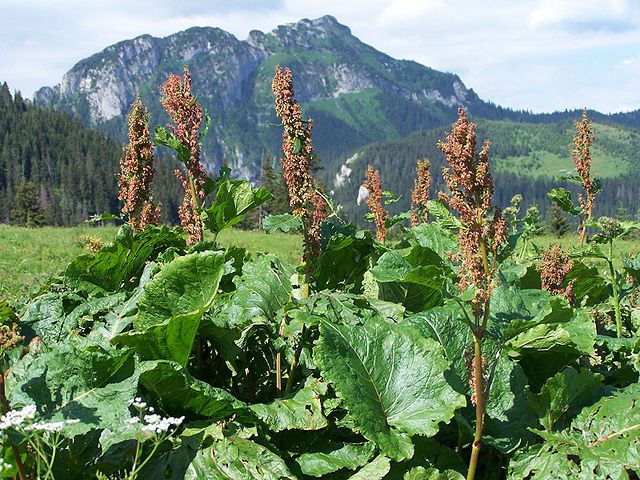
Wild sorrel is a familiar edible plant to many. It is very similar to its small brother, the common sorrel. The difference lies in the size and structure of the leaves, which in the horse species are much larger and tougher. The total height of the plant can reach two meters in height.
Due to the fact that the leaves are quite dense, they do not taste as pleasant as those of the usual type, but are quite edible. All parts of the plant are rich in tannins, essential oils, vitamins and microelements. And if the root is better used for preparing decoctions, then the leaves and petioles can be eaten fresh, for example, as part of a vegetable salad.
It is often found in forest and forest-steppe zones, in meadows, and horse sorrel also loves damp, swampy areas.
Snooze
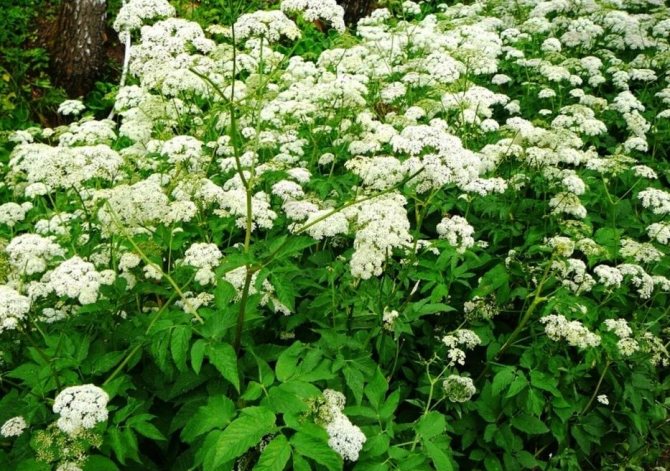
a perennial plant of the Umbelliferae family. There are a large number of oblong leaves on long thin stems. Depending on its location, this forest edible plant may have an umbrella of small white flowers on top. They appear in conditions of abundant sunlight. Prefers areas of wastelands, deciduous forests, and forest edges.
It is best to eat young shoots, leaves and petioles. They can be identified by their very light, almost transparent yellowish-green color. Before you start eating the plant, it must be boiled for at least 1-2 minutes. In this case, the skin must be removed from the stem. Boiled leaves are delicious to eat with butter. Very often it is added to soups.
Yarrow
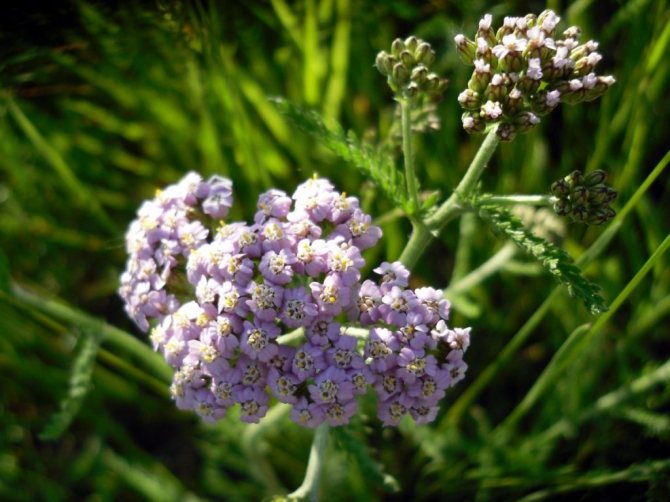
A widespread perennial plant from the Asteraceae family. It is characterized by a long straight stem, lanceolate leaves and small white or pink flowers collected in a dense shield.
You can meet it almost everywhere: along paths and roads, in meadows, wastelands, and in forest areas. Shoots, leaves and flowers are eaten. Due to its bitter taste, it is usually consumed in dishes or dried as a seasoning.
Plants from the Red Book
The number of some wild plants is greatly reduced due to both climate change and human economic activities. They are included in the Red Book , they need to be protected so that the plants do not completely disappear from the face of the Earth.
- Forest anemone.
- Wolf's bast.
- Spring adonis.
- European swimsuit.
- May lily of the valley.
- Lyubka bifolia.
- Lungwort.
- Common juniper.
- Primrose officinalis.
- Liverwort (copse).
- Snowdrop is snow-white.
- Lumbago (sleep-grass).
- Corydalis.
- Skewer.
- Orchis.
Snowdrop white.
Blooms in April. Its flower is very beautiful. It consists of six white petals. It is also called a milk flower, since the snowdrop bud resembles a drop of milk. Because of its beauty, people pick this plant in huge quantities. Therefore, it is no longer found around large cities. Collecting snowdrops , like other plants from the Red Book, is strictly prohibited.
Lungwort.
A small perennial plant with a branched root. The flowers are collected in umbrella inflorescences. When they first open, they are bright purple in color, and later darken. Because the flowers bloom gradually, the lungwort is multi-colored. Used in medicine since ancient times. Blooms in April - May for only one month. The plant is named lungwort because bees collect tribute from it in early spring.
Wolf's bast.
A small upright shrub. It has few branches with grayish-yellow bark. The stem and branches are covered with brown dots. The leaves are long, oval, curling at the tips of the branches. The peculiarity of the wolf's bast is that first it has lilac-pink flowers, and then leaves. The flowers exude a delicate aroma reminiscent of vanilla. The poisonous fruit ripens in August; it is red in color and the leaves are green.
Ludka bifolia.
A small herbaceous plant with loose tassels of fragrant white flowers of the same size. Lyubka bifolia blooms at the end of May and throughout June. It is also called a forest orchid - for its beauty, or a night violet, since in the evening it begins to smell very strongly.
Lungwort (pulmonaria)
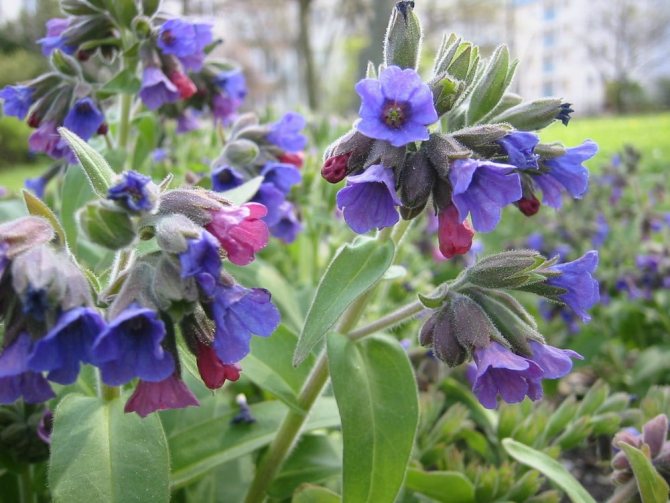
This beautiful, useful plant prefers to grow in clearings, forest edges and ravines. You can recognize it by its large number of blue-red flowers, wrapped in wide ovoid leaves with a rough surface.
You can eat lungwort raw without fear. It is very useful, as it contains ascorbic acid, silver, carotene, saponins, and tannins. For this purpose, only the ground part of the flower is used. The leaves and stems make a great addition to soup or a fresh salad.
Asparagus
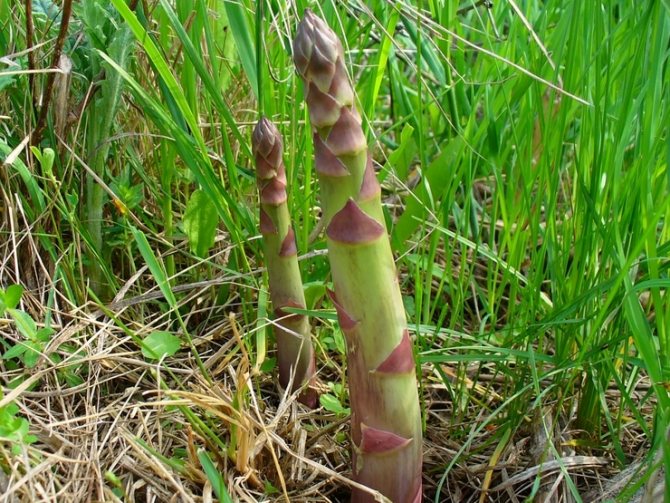
growing in the wild is slightly different from store-bought, its stem is thinner, but in general it is recognizable. The forest plant has edible fruits of bright red color. They ripen only by September, but if there is a need to eat something in natural conditions, then don’t worry, the stems, roots and shoots of asparagus are also edible. You can eat them raw, but if possible, it is better to boil them for a few minutes.
Mineral salts, saponin, essential oils - all this is contained in wild asparagus.
Wild herbs of Russia
There are a lot of such representatives. Almost all wild herbs, names and photos of their representatives can be seen in any corresponding encyclopedia. Let's try to take a closer look at the diversity of Russian wild herbs.
More than 900 species are known only for medicinal purposes, and there are many others. Their distribution across climatic zones is uneven. It is known that most plants, including herbs, are located in the more southern, southeastern and eastern regions of our country. The northern, northwestern and western regions are densely populated, but not so diverse in species composition.
So, we can cite as an example the region of Siberia (Western and Eastern Siberia, the Far East, all nearby areas, up to Chukotka). Here the most common wild herbs, the names of which are as follows:
- parfolia;
- Tribulus;
- dandelion;
- sorrel;
- shepherd's purse;
- primrose;
- viburnum;
- calliper;
- Highlander;
- bergenia;
- various sedges;
- feather grass;
- sagebrush;
- quinoa;
- celandine and many others.
Among those listed you can find both medicinal and conventional types. One thing they have in common is that they are representatives of flora living in the wild. Herbs are plants that are simply impossible to cover in one article. Too many of them. The European part of Russia is represented by a variety of beautiful flowering herbs that form entire carpets of different colors, making the wild nature unimaginably beautiful. Among them are the names of herbs such as lingonberry, common loosestrife, speedwell, crow's eye, common heather, Fischer's carnation, forest geranium, and chickweed.
Due to good climatic conditions, the central zone of Russia is famous for its many medicinal species of herbs, which also create a beautiful summer, spring and autumn landscape with their flowers. These are such as fragrant roses, lily of the valley, young shoots, oak grass, common chamomile, nightshade, blueberry, jasmine, hawkweed and others.

We will dwell on mountainous areas and their various herbs in more detail later.
Kislitsa
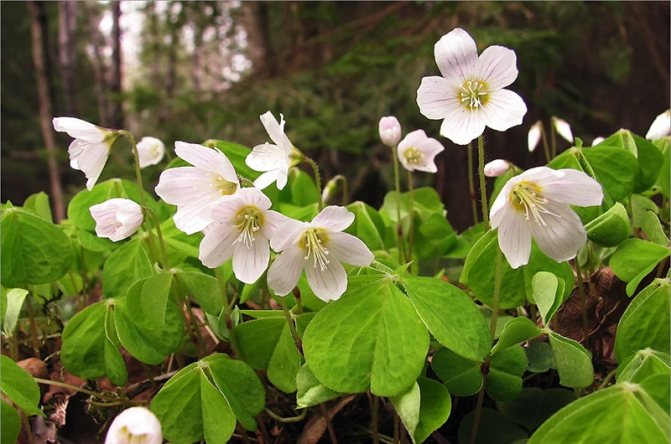
One of the few plants that does not have a stem. Its green leaves, which closely resemble clover, arise directly from the root. It can be found mainly in forests, especially in dark places, for example, under spruce trunks.
The most important advantage of sorrel is its high content of vitamin C. Along with it, the plant contains organic acids and carotene. You can eat its leaves raw to satisfy your hunger if necessary, or you can simply chew them to quench your thirst due to the secreted juice. At home, sorrel is added to cabbage soup, soups, salads, and even brewed as tea.
Sorrel

Sorrel is one of the most famous edible plants. It is often grown independently in gardens, but can also be found in the wild. It is localized mainly in fields, meadows, along rivers and lakes.
The sour taste familiar to many is due to the high content of organic acids. The composition also contains vitamins A, B, C and tannins. The stem of the plant is straight, and the leaves are spear-shaped.
Sorrel does not require any pre-treatment other than washing; the leaves can be eaten immediately or added to other herbs and vegetables to make a healthy salad. And, of course, this is an indispensable component for sour cabbage soup.
Pests
In nature, in addition to animals, plants have other natural enemies - these are the so-called pests, which include:
- Ticks. There are several thousand species of them in nature. Most are microscopic in size. Among them there are very dangerous ones. When they fall on leaves or stems, they suck out the juice from them, causing the shoots to begin to lose their shape. Some ticks are carriers of viruses.
- Moth moth. These insects belong to the butterfly family. Pieds are small in size; medium-sized individuals are rarely found, which have a wingspan of 5 to 20 mm. The caterpillars eat the foliage, after which the plant most often dies.
- Adult aphid. There are thousands of species of aphids. This is a very small insect, black or green in color, ranging in size from 1 to 5 mm. In midsummer, many aphids grow wings, which help them travel long distances to find new food. Aphids live on the underside of leaves, on buds and on the tops of plant shoots. It eats foliage, stems and flowers.
All types of pests must be dealt with using special means, otherwise they can destroy trees, grasses and shrubs. What are paronyms in Russian, you will find the answer in the link.
